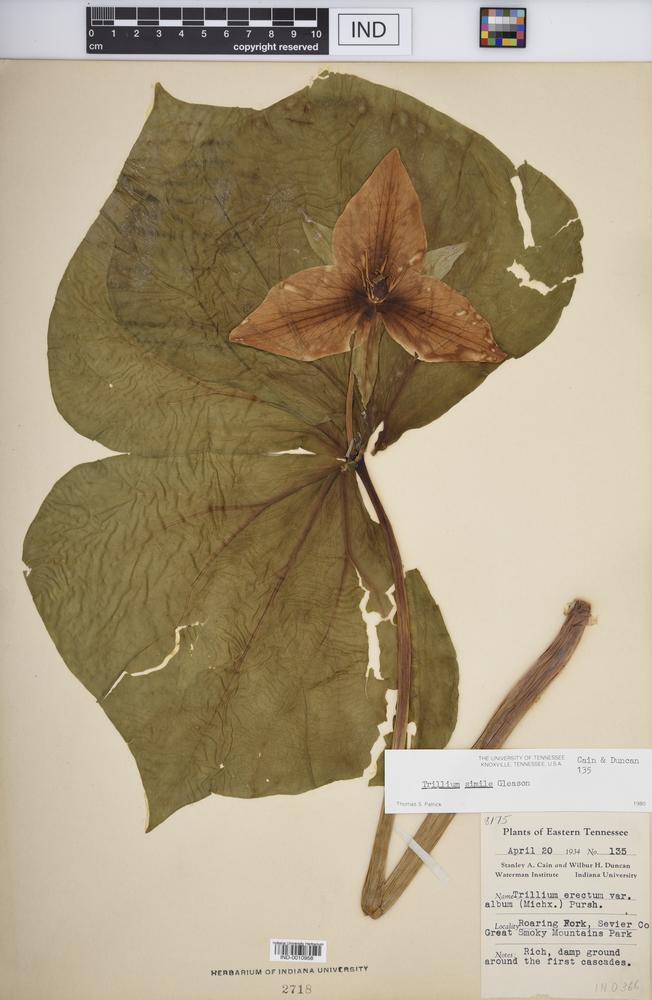|
|
|
|
Family: Melanthiaceae
jeweled wakerobin
|
Rhizomes forming clumps, stout, praemorse. Scapes 1-many, round in cross section, 3-6 dm, stout, glabrous. Bracts sessile to subsessile; blade green, major veins prominent, rhombic, 10-18 × 10-20 cm, not glossy, tapered basally, apex short-acuminate. Flower above bracts, erect to mostly leaning, odor faintly sweet, applelike; perianth gaping, strongly 3-dimensional; sepals spreading, green, flat, oblanceolate-lanceolate, 20-40 × 6-15 mm, margins entire, apex mildly sulcate; petals spreading-ascending, not recurved to weakly so at tip, creamy white, flat, adaxial veins faintly engraved, ovate to ovate-orbicular, 4-7+ × 1.5-4 cm, 1.5 times as long as sepals, heavy-textured, base rounded, margins entire, apex acuminate; stamens erect to weakly recurved, 7-20 mm; filaments purple or brownish, shorter than anthers, slender; anthers weakly recurved, yellow with brown undertones, 6-20 mm, longer than ovary, slender, dehiscence introrse; connectives purple-brown, not extending beyond anther sacs; ovary dark purplish black, pyramidal at anthesis, very strongly 6-angled, 7-12 mm, widely attached basally; stigmas short, mildly recurved, distinct, purple or yellow, not lobed adaxially, 2-5.5 mm, fleshy, basally widened to gradually tapered; pedicel ± erect to mostly leaning, 4-9 cm. Fruits baccate, dark purplish black, odorless, orbicular, 1-1.5 cm diam., fleshy, not juicy. Flowering mid spring (Apr--May). Rich coves of mature forests, edges of Rhododendron thickets and at edges of forests, in moist humus soil; 500--700 m; Ga., N.C., Tenn. A recent study of matK gene sequencing (S. Kazempour Osaloo et al. 1999) placed Trillium simile with the T. grandiflorum group and T. catesbaei, which has united styles and white-angled ovaries, not with the T. erectum group. In my opinion, this may reflect an error in labeling samples, for T. simile has the dark, round ovary with three, separate, subulate stigmas and other characteristics of the T. erectum alliance. Also, it hybridizes with T. erectum and other species of that alliance. L. Barksdale (1938) described a complex of forms that he considered to be the result of such hybridization. I have seen such complexes near Maryville, Tennessee, where T. simile and T. erectum forma album occur together with a full range of intergrades between the two. Trillium catesbaei and the species related to T. grandiflorum do not hybridize with any species, and all have slightly to clearly fused, linear styles. Clearly Trillium simile is closely related to T. vaseyi and T. erectum, but it seems to be a distinct species, though somewhat difficult to identify when not in its most robust condition. J. K. Small (1933) reported Trillium simile to be deliciously fragrant, a quality I have not noticed in my plants.
|



